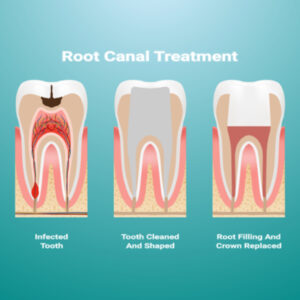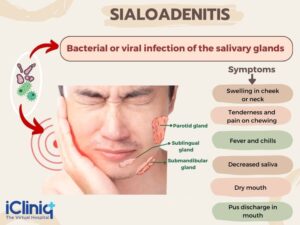Central Park Periodontics
Contact
Hours
<ul id=”hours” style=”transition: height .3s ease;”>
<li>Monday: 9:00am – 9:00pm</li>
<li>Tuesday: 9:00am – 6:00pm</li>
<li>Wednesday: 9:00am – 9:00pm</li>
<li>Thursday: 9:00am – 9:00pm</li>
<li>Friday: 9:00am – 5:00pm</li>
</ul>
Central Park Periodontics, located in the vibrant city of New York, NY, is a premier periodontal practice dedicated to providing exceptional care for patients seeking periodontal treatment and dental implant therapy. Led by a team of skilled periodontists and oral surgeons, Central Park Periodontics offers state-of-the-art treatments in a warm and welcoming environment, ensuring optimal oral health and beautiful smiles for every patient.
Periodontal Services
Gum Disease Treatment
- Comprehensive Evaluation: Thorough examination and diagnosis of gum disease to determine the most effective treatment approach.
- Scaling and Root Planing: Non-surgical deep cleaning to remove plaque and tartar from below the gumline and smooth the tooth roots.
- Periodontal Surgery: Surgical interventions such as flap surgery and bone grafting to treat advanced gum disease and restore periodontal health.
Dental Implant Therapy
- Implant Placement: Expert placement of dental implants to replace missing teeth and provide a stable foundation for crowns, bridges, or dentures.
- Bone Grafting: Bone augmentation procedures to rebuild bone structure and enhance the success of dental implant placement.
- Implant Restoration: Customized restoration of dental implants with lifelike crowns or prosthetic teeth for a natural-looking smile.
Advanced Procedures
Soft Tissue Grafting
- Gum Grafts: Surgical procedures to augment thin or receding gum tissue and improve gum aesthetics and function.
- Connective Tissue Grafts: Techniques to restore gum tissue lost due to periodontal disease or trauma, enhancing smile aesthetics and gum health.
Cosmetic Periodontics
- Gum Contouring: Reshaping of the gumline to create a more symmetrical and aesthetically pleasing smile.
- Crown Lengthening: Surgical procedure to expose more of the tooth’s surface, enhancing the appearance of short or gummy smiles.
Patient Care
Personalized Treatment Plans
- Customized Consultations: In-depth discussions and treatment planning sessions to address each patient’s unique oral health needs and goals.
- Collaborative Approach: Working closely with patients and their referring dentists to ensure coordinated and comprehensive care.
Comfort and Convenience
- Relaxing Environment: A welcoming atmosphere designed to help patients feel at ease during their visits.
- Sedation Options: Providing sedation dentistry options to help anxious patients relax and feel comfortable during treatment.
Root Canal Therapy
Root canal therapy, also known as endodontic treatment, is a dental procedure performed to treat infected or damaged tooth pulp, which is the soft tissue located inside the tooth's root canal. The goal of root canal therapy is to save the natural tooth and alleviate pain and discomfort caused by infection or inflammation.
Here's an overview of root canal therapy and its key aspects:
- Indications for Root Canal Therapy:
- Severe tooth decay that has reached the inner layers of the tooth, including the pulp.
- Dental trauma or injury that has caused damage to the tooth pulp.
- Infection or inflammation of the tooth pulp, often resulting in symptoms such as persistent toothache, sensitivity to hot or cold foods, swelling, or abscess formation.
- Procedure:
- Diagnostic Evaluation: The dentist begins by examining the affected tooth and may perform diagnostic tests, such as X-rays, to assess the extent of damage to the tooth pulp.
- Anesthesia: Local anesthesia is administered to numb the tooth and surrounding tissues, ensuring the patient's comfort throughout the procedure.
- Access and Cleaning: The dentist creates a small opening in the crown of the tooth to access the infected or inflamed pulp tissue. Specialized instruments are used to remove the diseased pulp and thoroughly clean the root canal system.
- Shaping and Disinfection: The root canal is shaped and irrigated with antimicrobial solutions to eliminate bacteria and disinfect the inner chamber of the tooth.
- Filling: Once the root canal is cleaned and disinfected, it is filled with a biocompatible material called gutta-percha to seal the space and prevent reinfection.
- Restoration: Depending on the extent of tooth structure lost to decay or damage, a dental crown or filling may be placed on the tooth to restore its strength, function, and appearance.
- Benefits of Root Canal Therapy:
- Pain Relief: Root canal therapy effectively alleviates tooth pain and discomfort associated with pulp inflammation or infection.
- Preservation of Natural Tooth: By removing the infected or damaged pulp and sealing the root canal, root canal therapy allows patients to retain their natural tooth rather than resorting to extraction.
- Prevention of Spread of Infection: Root canal therapy helps prevent the spread of infection to surrounding teeth, gums, or jawbone, reducing the risk of more extensive dental problems.
- Restoration of Function: Following root canal treatment and restoration, the tooth can function normally for biting, chewing, and speaking.
- Post-Treatment Care:
- Patients may experience mild discomfort or sensitivity for a few days following root canal therapy, which can typically be managed with over-the-counter pain medication.
- Good oral hygiene practices, including regular brushing, flossing, and routine dental check-ups, are essential to maintain the health of the treated tooth and surrounding tissues.
- Avoiding hard or sticky foods and habits like chewing on ice or using teeth as tools can help prevent damage to the restored tooth.
In summary, root canal therapy is a valuable dental procedure that can save a tooth from extraction and relieve pain caused by infection or inflammation of the tooth pulp. With modern techniques and advancements in dental technology, root canal treatment is a safe, effective, and predictable way to preserve natural teeth and restore oral health and function.
Sialadenitis
Sialadenitis is an inflammatory condition affecting one or more of the salivary glands, which are responsible for producing saliva. This inflammation can be acute or chronic and may result from infection, obstruction, autoimmune disorders, or other underlying causes.
Here are some key points about sialadenitis:
- Causes: Sialadenitis often occurs due to bacterial infection, most commonly by the bacteria Staphylococcus aureus or Streptococcus species. The infection may result from obstruction of the salivary gland ducts, which can occur due to factors such as salivary gland stones (sialolithiasis), dehydration, poor oral hygiene, or certain medical conditions (such as Sjögren's syndrome). Other causes of sialadenitis include viral infections (such as mumps), autoimmune disorders (such as Sjögren's syndrome or sarcoidosis), radiation therapy to the head and neck, or systemic conditions affecting the salivary glands.
- Symptoms: The symptoms of sialadenitis may include pain and swelling in the affected salivary gland, often worsened during meals when saliva production increases. Other common symptoms may include redness or warmth over the affected gland, fever, chills, difficulty opening the mouth, dry mouth, or foul-tasting saliva. In severe cases, abscess formation or pus drainage from the duct opening may occur.
- Diagnosis: Diagnosis of sialadenitis involves a thorough medical history, physical examination, and evaluation of symptoms. Diagnostic tests, such as ultrasound, CT scan, or MRI, may be used to visualize the salivary glands and assess for signs of inflammation, obstruction, or abscess formation. In cases of suspected bacterial infection, a culture of the saliva or pus may be obtained to identify the causative organism and guide antibiotic therapy.
- Treatment: Treatment of sialadenitis depends on the underlying cause and severity of symptoms. Acute bacterial sialadenitis is typically treated with antibiotics to eliminate the infection, along with measures to promote saliva flow (such as hydration, warm compresses, and sour candies or lemon juice). In cases of obstruction, manual expression of saliva or surgical removal of salivary gland stones may be necessary. Chronic sialadenitis may require long-term management with antibiotics, anti-inflammatory medications, or other interventions to control symptoms and prevent recurrence.
- Complications: If left untreated, sialadenitis can lead to complications such as abscess formation, cellulitis (spread of infection to surrounding tissues), or recurrent infections. In severe cases, chronic inflammation of the salivary glands may cause irreversible damage, leading to decreased saliva production and increased risk of dental decay, oral infections, or difficulty swallowing.
In summary, sialadenitis is an inflammatory condition affecting the salivary glands, typically caused by infection, obstruction, or autoimmune disorders. Prompt diagnosis and appropriate treatment are essential to alleviate symptoms, prevent complications, and preserve the function of the salivary glands.







